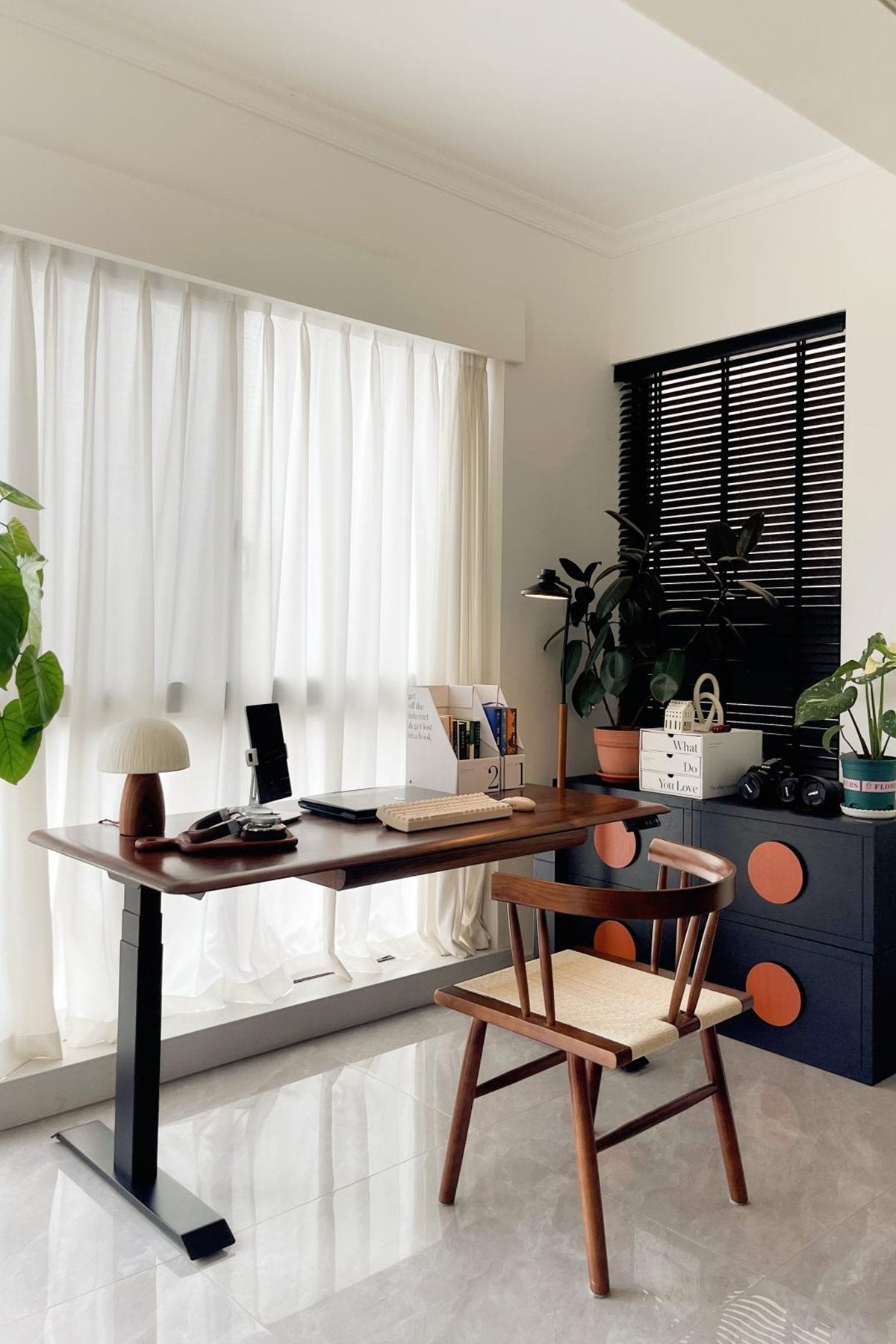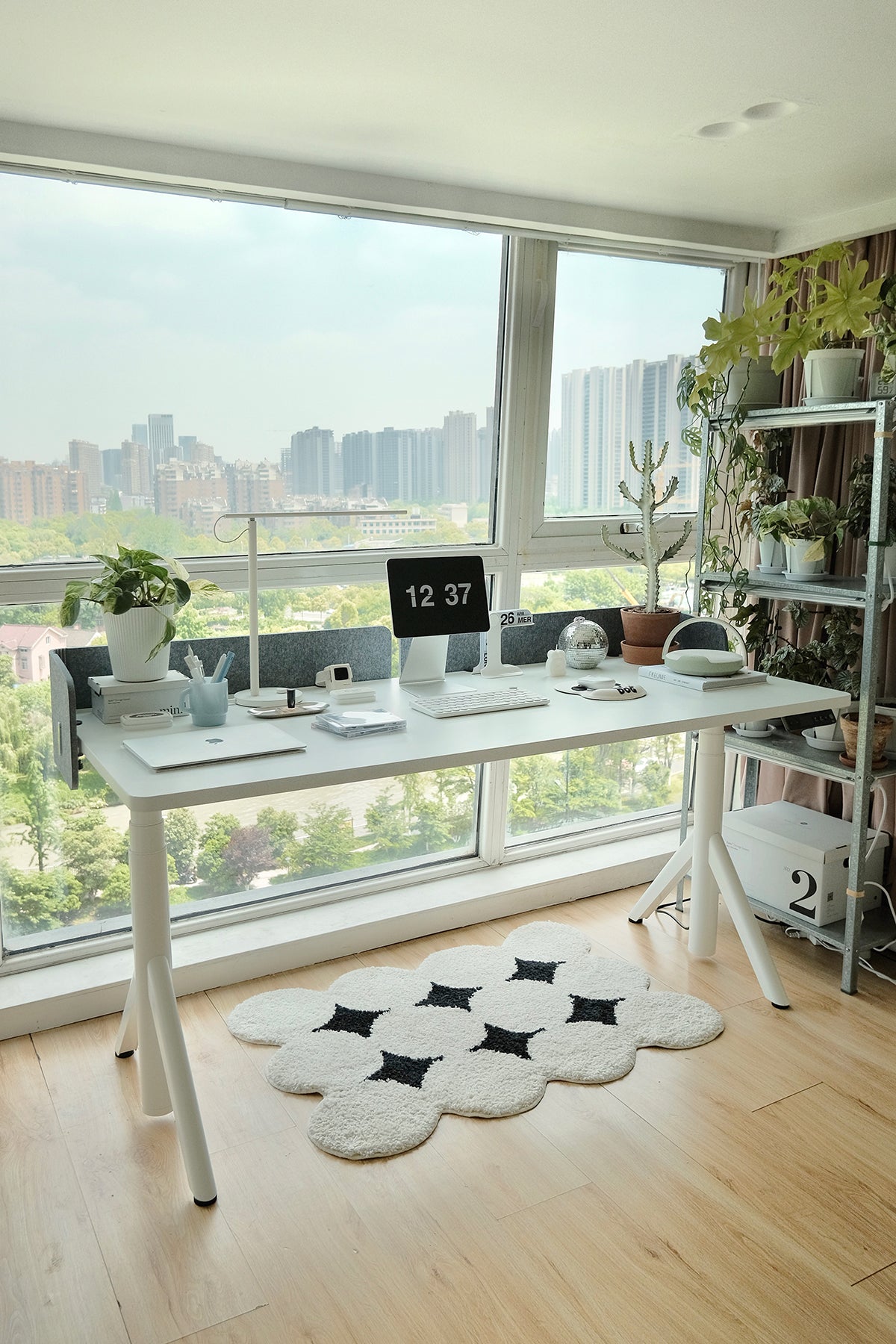What is the Best Desk Top Material
The desktop material plays a key role in its functionality, appearance, and durability. Whether setting up a home office, a study space for kids, or creating the perfect gaming setup, choosing the suitable desk top material is crucial. In this guide, we'll explore various desk top materials, their pros and cons, and help you select the best option based on your needs.

Common Desk Top Materials
1. Solid Wood
Solid wood desk tops are loved for their natural texture and elegant look. They add warmth and style to any room and are also considered eco-friendly. Here are some popular types of solid wood and their characteristics:
- Walnut: Known for its dark, rich color and fine grain, walnut gives a luxurious and classic feel, perfect for executive desks or high-end home offices.
- Cherry: Its color ranges from light pink to deep red and darkens over time, giving it a warm tone, which is ideal for traditional furniture.
- Maple: Light in color and very hard, maple is durable and scratch-resistant, making it a great choice for modern desks.
- White Oak: Strong and durable with a coarse grain, it's suitable for industrial or rustic-style desks.
- Red Oak: Slightly darker than white oak, with more pronounced grain, it's perfect for classic styles.
- Ash: Known for its elasticity and strength, ash wood has a smooth appearance and is often used for high-end furniture.
Solid wood is also graded by quality; FAS Grade is the highest grade, featuring wide boards with few imperfections, and is used for premium custom furniture. Next is Select, No.1 Common, and No.2 Common; they are more budget-friendly options, but with more knots and color variation, suitable for everyday furniture.

2. Engineered Wood
Engineered wood is more affordable than solid wood and offers good stability and durability. The most common types are:
- Plywood: Made from layers of wood veneers, plywood is strong, moisture-resistant, and durable, making it a good choice for sturdy, scratch-resistant desk tops.
- MDF (Medium-Density Fiberboard): Known for its smooth surface, MDF is easy to shape and paint but is less moisture-resistant, so it is best for indoor use.
- Particleboard (MFC): Made from wood chips and often covered with a melamine finish, particleboard is affordable, scratch-resistant, and moisture-resistant, making it popular for budget office furniture.
Compared to solid wood, which offers a natural look and is eco-friendly but expensive and sensitive to humidity, plywood provides a solid and stable alternative, making it suitable for heavy use at a mid-range price. Conversely, MDF is affordable and versatile, making it ideal for modern, minimalist designs. For those seeking a budget-friendly option, particleboard is durable and perfect for simple, functional desks.

3. Metal Desk Tops
Metal desk tops are known for their modern look and high durability. They are easy to clean and maintain, making them a good choice for heavy-duty use. However, metal can feel cold and show scratches or dents over time. Metal desks are ideal for industrial or contemporary office setups.

Source: Pinterest
4. Bamboo Desk Tops
Bamboo is a lightweight, eco-friendly material that's becoming more popular in modern furniture design. It has a natural texture and is sustainable as bamboo proliferates. While bamboo is softer than hardwoods, it offers a stylish and environmentally conscious option.

5. Glass Desk Tops
Glass desk tops create a sleek, modern look with a smooth surface that is easy to clean. However, glass is fragile and can shatter or crack, making it a less practical choice for high-traffic areas or homes with young children. Glass desks are a great fit for minimalist or contemporary spaces.

Best Desk Top Materials for Different Uses
1. Home Office
You'll want a balance of aesthetics and durability for a home office. Solid wood desk tops can enhance the look of the space and provide a long-lasting work surface. If you're on a budget, consider plywood or MDF desk tops, which offer a good mix of durability and style without breaking the bank.
Here are several standing desk recommendations for you:
Robin Pro Dual Adjustable Melamine Home Sit Standing Desk
2. Corporate Office
In a corporate setting, durability and ease of maintenance are essential. Desk tops made from particleboard or plywood with a melamine finish are commonly used, as they resist scratches and stains and are easy to clean. For a sleek, modern office, metal or glass desk tops might also be a great choice.
Here are several standing desk recommendations for you:
Pesk Dual Motors Melamine Office Electric Standing Desk

3. Study Desks for Kids
Safety and durability are essential for children's study desks. Engineered wood options like plywood or particleboard offer an affordable and long-lasting surface. Look for materials certified for low emissions to ensure a safe environment. A protective finish will also help keep the desk looking good despite daily wear and tear.
Here are several standing desk recommendations for you:
Robin Melamine Dual Motors Home Office Sit Standing Desk

How to Choose the Right Desk Top Material
1. Focus on Eco-Friendliness and Health
When choosing a desk top material, consider its impact on the environment and your health. Engineered wood products often use adhesives that can release formaldehyde, so look for materials certified for low emissions, such as E0-grade or FSC-certified wood. These materials ensure low levels of formaldehyde, making them safer, especially for children or individuals with sensitivities.
2. Maintenance and Longevity
Each material has different maintenance needs. Solid wood requires regular waxing to prevent cracking, while metal and glass surfaces need care to avoid scratches. Plywood and particleboard are easier to maintain with simple cleaning, making them more practical for everyday use. Consider the time and effort you're willing to invest in keeping your desk when choosing the material.

There is no "one-size-fits-all" material when it comes to desk tops. Your decision should be based on your budget, the setting where the desk will be used, and your preferences. Whether it's high-end solid wood or budget-friendly engineered wood, each material has its strengths. Finding the right balance between functionality and style will help you choose the perfect desk top material for your space.
The other articles you might interested:
What is the Best Standing Desk for a Home Office






Leave a comment